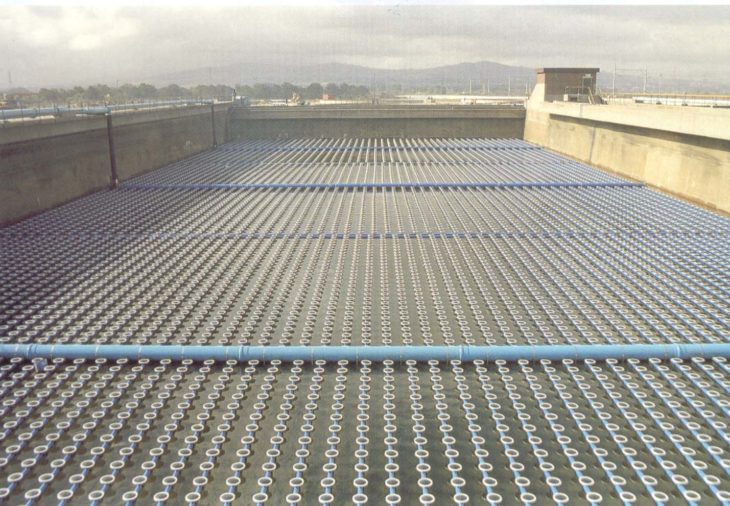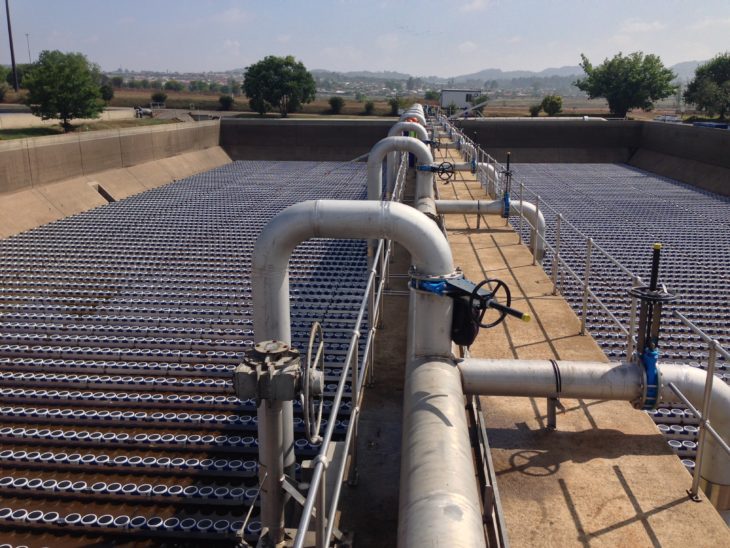The current initiative of “Go Green” is gaining increased popularity all over the world. Industries are coming up with solutions that are friendly to the environment and energy-efficient. As such, there are many companies that are manufacturing a fine bubble aeration system to fit this purpose perfectly.
You may be wondering what fine bubble aeration is and why is it important? Well, you are in the right place. Read on to find out about all you need to know about fine bubble aeration and why it is vital for the treatment of wastewater.
Here is what we explore in this article:
- What is fine bubble aeration?
- Types of fine bubble aerators
- The major benefits of fine bubble aeration
- The major challenges of fine bubble aeration
- The determinants of the performance of fine bubble diffusers
- How to operate and maintain fine bubble diffusers
Contents
What is fine bubble aeration?
It is a subsurface form of diffusion done in wastewater treatment, whereby very small bubbles of air are introduced to the water in order to enhance the biological growth of the microorganisms. The point is to diffuse oxygen into the water so that it can be utilized by microorganisms and in turn, they break down the organic material.
So, how exactly does it work?
A pipe is used to introduce oxygen into the diffusers that are usually located at the tank bottom or any other water body. The diffusers contain numerous pores which allow the air to flow into the wastewater.
In most fine bubble aeration system, a header pipe running along either the width or length of a tank or water body is mounted with several diffusers that bring in the oxygen. Depending on the size of the water body or other specifications, various designs of diffusers have different shapes and sizes. Click this page, get more information about aeration tank in wastewater treatment.

Source: biomicrobe
Types of fine bubble aerators
-
Membrane Disk Diffusers
With an average diameter of between 9” and 11” and composing EPDM rubber, membrane disc diffusers are mounted on the base plate of the tank or whatever else is holding the water. As the oxygen flows through the diffuser, the EPDM rubber expands and causes hundreds of tiny perforations to open and release thousands of tiny bubbles into the water.
-
Tube Diffusers
Also identified as “Bubble Tubing”, this type of aerator composes of LDPE that has tiny holes and slits punched on it. The holes leak the oxygen at an airflow that is pressurized. However, unlike the scenario in Membrane Disk Diffusers, the LDPE in perforated tubing do not expand to open its perforations, but the air bubbles are still released.
-
Perforated Tubing
Usually made of hollow plastic or rigid ceramic cylinders that are thick and long. The cylinders are surrounded by EPDM rubber, and therefore air is released the same way it does in disk diffusers. However, there is a difference in design in that tube diffusers have more surface area that allows them to release more air bubbles.

Source: triplepointwater
The major benefits of fine bubble aeration
- Energy Efficient – Fine bubble aeration boasts a Standard Aeration Efficiency (SAE) of 4–7 lbs O2/hr/hp-wire. This makes it one of the most energy-efficient aeration technologies. The good thing is that even those using less efficient modes such as surface aeration can easily switch to bubble aeration and save between 40-60% on the average costs of energy.
- Improved levels of dissolving oxygen – by using this technology, you also benefit from Standard Oxygen Transfer Efficiencies (SOTE) of between 1.8 – 2.2% for every submergence foot. Given the complexity of this technology, it is going to be very difficult for any other product in the market to match this kind of SOTE in the near future. Once you begin using fine bubble aeration for your wastewater lagoon, you will begin noticing an increase in the level of dissolved oxygen.
- Minimal motors requiring maintenance – compared to other common types of aeration such as surface aerators, this system usually has much fewer motors to maintain. A typical surface system has 5-10 aerators while a typical fine bubble system has only 2-3 blowers, which significantly cut down on materials, maintenance, and running costs.
The major challenges of fine bubble aeration
- The fine pores contained in these diffusers are susceptible to biological or chemical fouling, which generates high head loss and impairs the efficiency. However, this challenge can be solved by regular routine cleaning.
- The fine pore diffusers can also be exposed to chemical attacks mainly from perforated membranes. As such, there should be a careful identification of materials chosen for every wastewater treatment to minimize or eliminate the chances of chemical reactions.
- Given the design of the aeration basin, a means of dewatering the tank for cleaning purposes must be incorporated.

Source: media-zone.ngage.co.za
The determinants of the performance of fine bubble diffusers
Diffused aeration systems perform differently depending on how the factors affecting their performance are handled. Under normal conditions of operation, the main parameters influencing this performance are fouling and the characteristics of wastewater.
Fouling impairs the efficiency of the whole system. More specifically, it creates an increase in the back-pressure, which may cause wear and tear on the blower. It also increases maintenance and energy costs.
The characteristics of the wastewater also determine the efficiency level of the system. If the wastewater is too contaminated, fine bubble diffusion may not be as effective as it would be in less contaminated water.
How to maintain fine bubble diffusers
For optimal performance, it is very important to apply preventive, cost-effective maintenance on the bubble diffusers such as simply keeping them clean. This simple maintenance method goes a long way as it clears fouling on the fine pores and eliminates air-side dust, which inhibits the smooth functioning of diffusers.
Depending on the dirt and contamination level of the fine bubble aeration, the method of cleaning could include air bumping, high-pressure water jetting, alkaline washing, acid washing, or gas injection.
Happy with this information? Got more questions? Require some clarification? Kindly leave a comment, and we will be glad to respond to your reaction.
